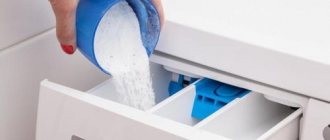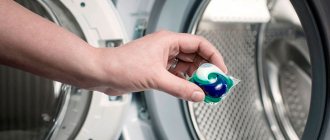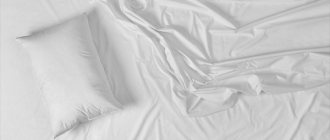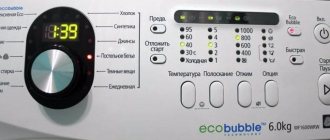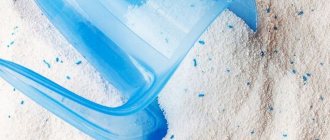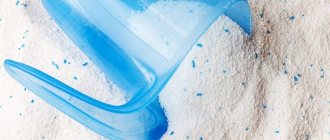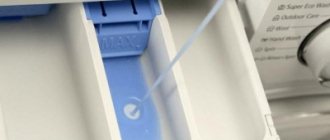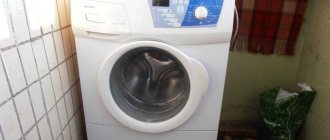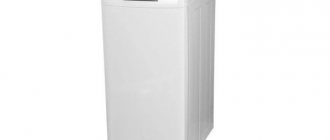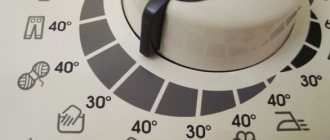Often, when preparing various dishes, housewives, without having accurate kitchen scales at hand, measure the required amount of necessary ingredients using improvised means. Mostly tablespoons and tea spoons are used, sometimes dessert spoons, or for large volumes measuring in glasses is used.
It's simple, convenient and fast. However, you need to know, for example, how many grams are in a tablespoon of certain products, how much is contained in a tea or dessert (with or without a slide) of various ingredients of free-flowing and flowing consistency. As, for example, in one of the recipes for a fluffy sponge cake in a previously written article, the composition is measured in spoons, although the number of grams is written next to it.
It is unlikely that anyone will remember all the numbers by heart, so it is best to always have on hand a special table for measuring the weight and volume of bulk, liquid and viscous products, which indicates the weight values of the most popular ingredients, those most often used in cooking.
Every self-respecting housewife should have such a useful reminder in her kitchen, helping her quickly measure out the exact amount of necessary ingredients for future breakfasts, lunches and dinners. And even a novice cook will never make a mistake in the dosage, knowing how much a particular type of product weighs when placed in a tablespoon or teaspoon.
How many grams of salt, sugar or honey are in a tablespoon?
This well-known kitchen appliance is in every home! And not even one copy, which is why we will use it as a means for measuring the weight of the products we need. And the most ordinary tablespoon will help not only young, but also experienced housewives.
All components of dishes have different grain size and density, and this, of course, affects their “capacity” in a tablespoon. For example, powdered sugar or wheat flour are very finely ground, so more of them can fit. However, the density of these ingredients is not very high, so they will have a small weight in our home measuring device.
You can print this table of measures and weights of various products that can be measured in tablespoons to hang it somewhere in front of your eyes in the kitchen.
| Product Name | Without slide in grams | In heaped grams |
| How many grams of fine salt in a tablespoon | 25 | 30 |
| How many grams of coarse salt | 22 | 27 |
| How many grams of sugar are in a tablespoon? | 20 | 25 |
| How many grams of flour in a tablespoon | 16 | 22 |
| How many grams of water | 18 | — |
| How many grams of honey in a tablespoon | 30 | — |
| Powdered milk | 20 | 24 |
| Whole milk | 19 | — |
| Condensed milk | 36 | — |
| Cream | 16 | — |
| Sour cream | 33 | 43 |
| Cottage cheese | 35 | 40 |
| Vegetable oil | 20 | — |
| Ghee (liquid) butter | 17 | — |
| Butter | 20 | 25 |
| Flax seeds | 13 | 20 |
| Linseed oil | 17 | — |
| Tomato paste | 33 | 40 |
| Cocoa powder | 12 | 18 |
| Tea | 8 | 12 |
| Ground coffee | 16 | 22 |
| Buckwheat | 15 | 20 |
| Rice | 20 | 27 |
| Cereals | 10 | 16 |
| Cornflakes | 8 | 12 |
| Semolina | 17 | 23 |
| Pearl barley | 18 | 23 |
| Beans | 28 | 33 |
| Peas | 17 | 21 |
| Ground crackers | 14 | 20 |
| Dry yeast | 10 | 15 |
| Fresh yeast | 33 | — |
| Jam | 16 | — |
| Raisin | 15 | 20 |
| Ground nuts | 16 | 21 |
| Dried mushrooms | 8 | 13 |
| Vinegar 9% | 18 | — |
| Ground black pepper | 15 | 20 |
| Citric acid granules | 15 | 18 |
| Soda | 21 | 28 |
| Starch | 9 | 12 |
| Gelatin | 12 | 17 |
| Mayonnaise | 35 | 42 |
Another important point! Tablespoons can be different and their capacity can be the same. This depends on the depth of the cup (scoop) itself and the design of the product. For example, a “table spoon” is slightly smaller than a menu spoon in depth and in the length of the cup itself. In this table, the weight of the products was measured with a tablespoon having a length of 21.3 cm. Please note that discrepancies due to differences in models may be approximately 3 grams.
Typically, a standard measuring tablespoon is considered to be one in which the width of its widest part is 4 cm, and the length of the scoop is 7 cm. This is exactly what is mentioned in cooking when measuring.
Two pans for measuring bulk product
How to measure grams without scales, if there is no time and desire to use spoons and glasses, but you need a kilogram, two or even more of the product? Two pans will help, our grandmothers used this method! Measuring the weight of a product in this way is very simple, the main thing is to have in stock:
- large saucepan;
- a small saucepan that will fit completely into a large one;
- load - a weight weighing a kilogram or an unopened package of flour or cereal.
So, if you need to measure the exact weight of a product, you will proceed in the following way:
- Place a weight in a small saucepan whose weight you know exactly - a kilogram, 600 grams, and so on.
- Place the weighted saucepan in a large saucepan or basin.
- Fill a large container with water to the level, if any, or to the brim.
- Remove the weight from the pan; the water will decrease.
- Now you can fill the small container with the product you need to measure. As soon as the water in the large saucepan rises to its previous level, the small saucepan will have the same weight of product as the load.
Totally easy! At first glance, it seems that the process is long, but it is not, and you will be convinced of the simplicity of the method as soon as you try to take the measurement yourself.
How much vinegar, water or oil fits in a dessert spoon?
A dessert spoon is smaller in size than a tablespoon, but larger than a teaspoon and is located right between them. It is usually used for eating sweets. However, she copes with the measurement mission no worse than her younger or older “sister”.
From the table below you will find out how many grams of liquid or bulk products fit in a dessert spoon.
If you wish, you can download this table here.
| Product Name | Without slide in grams | In heaped grams |
| How many grams of fine salt are in a dessert spoon? | 17 | 20 |
| How many grams of coarse salt | 15 | 18 |
| How many grams of sugar are in a dessert spoon? | 13 | 17 |
| How many grams of flour are in a dessert spoon? | 11 | 15 |
| How many grams of water | 12 | — |
| How many grams of honey are in a dessert spoon? | 20 | — |
| Powdered milk | 13 | 16 |
| Whole milk | 12 | — |
| Condensed milk | 24 | — |
| Cream | 11 | — |
| Sour cream | 22 | 29 |
| Cottage cheese | 23 | 27 |
| Vegetable oil | 13 | — |
| Ghee (liquid) butter | 11 | — |
| Butter | 13 | 17 |
| Flax seeds | 9 | 13 |
| Linseed oil | 11 | — |
| Tomato paste | 22 | 27 |
| Cocoa powder | 8 | 12 |
| Tea | 5 | 8 |
| Ground coffee | 11 | 15 |
| Buckwheat | 10 | 13 |
| Rice | 13 | 18 |
| Cereals | 7 | 11 |
| Cornflakes | 5 | 8 |
| Semolina | 11 | 15 |
| Pearl barley | 12 | 15 |
| Beans | 19 | 22 |
| Peas | 11 | 14 |
| Ground crackers | 9 | 13 |
| Dry yeast | 7 | 10 |
| Fresh yeast | 22 | — |
| Jam | 11 | — |
| Raisin | 10 | 13 |
| Ground nuts | 11 | 14 |
| Dried mushrooms | 5 | 9 |
| Vinegar 9% | 12 | — |
| Ground black pepper | 10 | 13 |
| Citric acid granules | 10 | 12 |
| Soda | 14 | 19 |
| Starch | 6 | 8 |
| Gelatin | 8 | 11 |
| Mayonnaise | 23 | 28 |
Washing parameters and dosage
The amount of detergent required for high-quality washing of stains is influenced by the following factors:
- Temperature. Hot water means less SMS consumption.
- Degree of pollution. Dirtier laundry means more dose.
- Hardness of water. Hard water - high doses.
- Amount of laundry . More loading - more SMS for washing.
- Water consumption per cycle. As water consumption increases, SMS consumption increases.
- Washing program and fabric type. Selected individually. It is recommended to wash wool and silk with special products.
It is always useful to know how much of a particular substance is contained in the most popular cutlery. A simple spoon can be useful in a variety of situations. When placing SMS into a cuvette, try not only to measure the dose correctly, but also take into account as many factors as possible that influence the wash.
How many grams are in a teaspoon - table of different products
Almost all dishes have to be salted during the cooking process, and a small amount of sugar, flour, spices or vinegar must be added to add piquancy and emphasize the brightness of the taste. And, for example, the exact ratio of salt to the volume of the dish will allow you to create a bright flavor range, while avoiding over-salting or under-salting.
The most common ingredients that are most often measured in teaspoons are salt and sugar, so we would need to know how many grams they contain.
And again, the table will help you easily understand this issue. Download!
| Product Name | Without slide in grams | In heaped grams |
| How many grams of fine salt in a teaspoon | 8 | 10 |
| How many grams of coarse salt | 7 | 9 |
| How many grams of sugar are in a teaspoon? | 7 | 9 |
| How many grams of flour in a teaspoon | 5 | 7 |
| How many grams of water | 6 | — |
| How many grams of honey in a teaspoon | 10 | — |
| Powdered milk | 7 | 9 |
| Whole milk | 6 | — |
| Condensed milk | 12 | — |
| Cream | 5 | — |
| Sour cream | 11 | 14 |
| Cottage cheese | 11 | 13 |
| Vegetable oil | 7 | — |
| Ghee (liquid) butter | 6 | — |
| Butter | 7 | 9 |
| Flax seeds | 4 | 6 |
| Linseed oil | 5 | — |
| Tomato paste | 11 | 13 |
| Cocoa powder | 4 | 6 |
| Tea | 2 | 4 |
| Ground coffee | 5 | 7 |
| Buckwheat | 5 | 7 |
| Rice | 7 | 9 |
| Cereals | 3 | 5 |
| Cornflakes | 2 | 4 |
| Semolina | 6 | 8 |
| Pearl barley | 6 | 8 |
| Beans | 9 | 11 |
| Peas | 6 | 8 |
| Ground crackers | 5 | 7 |
| Dry yeast | 3 | 5 |
| Fresh yeast | 11 | — |
| Jam | 5 | — |
| Raisin | 5 | 7 |
| Ground nuts | 5 | 7 |
| Dried mushrooms | 2 | 4 |
| Vinegar 9% | 6 | — |
| Ground black pepper | 5 | 7 |
| Citric acid granules | 5 | 6 |
| Soda | 7 | 9 |
| Starch | 3 | 4 |
| Gelatin | 4 | 6 |
| Mayonnaise | 12 | 14 |
Frequently asked questions
Users who do not understand weights and measures often encounter problems when measuring detergents. They have questions:
- Users often ask whether 10, 30 or 50 mg is how many teaspoons? You should remember how many milligrams are in 1 gram. One gram contains 1000 mg, so to measure out this amount of product, you will most likely need a knife. 50 mg = 0.05 g, this is a hundredth part of 1 tsp. This amount is usually about.
- 30 grams of powder is how many spoons? The answer is, depending on which ones. If there are tea glasses, then 6, if dessert ones - 3. With table drinks it is more difficult - you need to measure one incomplete, without 5 g.
Video on how to weigh food without scales at home
Last year was a very fruitful year for apples and my friends brought a lot of apples from the dacha and I had to somehow determine how many kilograms of delicious gifts I had. But there are no such scales at home, so I found on the Internet an interesting way to weigh food without a kitchen scale. Using water and two pans.
Take a look, maybe it will be useful to you too!
You can also prepare delicious dishes without using a kitchen scale by knowing the average weight of a number of products. For example:
- small chicken egg – 50-55 g;
- protein – 35 g;
- yolk – 15 g;
- medium chicken egg – 55-65 g;
- large chicken egg – 65-70 g;
- medium potato tuber – 150-200 g;
- small garlic clove – 5 g;
- medium onion – 150 g;
Why is an overdose of SMS unprofitable?
If you read what is written on the package, it is easy to get confused and make mistakes. There is an opinion that manufacturers deliberately inflate doses so that consumers use up the pack as quickly as possible. In this simple way, the manufacturer increases income by about 10%.
It is not advisable to exceed the dose, things will not wash out better, but the negative consequences of an overdose will be:
- Rinsing dry matter is always a difficult task, and if it is put in excess, it becomes much more complicated. And if you don’t turn on an additional rinse - and this again means extra consumption of water and electricity, then white stains will appear on the fabric - signs of an overdose.
- A chemical “amber” will “start up” inside the drum. It persists for a long time, being transferred to the laundry during subsequent washes.
- The tray is clogged.
How many grams of flour are in a faceted glass?
Remember, grandmothers used to always have it and often used it as a measure for the volume of food. Moreover, if some ingredient has a large volume, or simply measuring it with spoons is tedious and time-consuming, then we take an ordinary faceted glass as a measuring device.
Its volume is 250 ml, and the volume of water along the rim is 200 grams.
Here is another list of products that fit into a faceted glass up to the rim.
- Water - 200 gr.;
- Sugar - 160 gr.;
- Wheat flour - 130 gr.;
- Whole milk - 205 g;
- Powdered milk - 100 g;
- Vegetable oil - 190 gr.;
- Ghee butter - 190 gr.;
- Oatmeal - 80 gr.;
- Buckwheat - 165 gr.;
- Peas - 185 gr.;
- Rice - 175 gr.;
This information may contain slight errors regarding products of bulk or liquid, viscous consistency.
How to measure 1 gram of boric acid?
Hobbyist gardeners use boric acid for fertilizing, stimulating the growth of certain crops, repelling pests, and treating plant diseases. Proportions must be observed there. Sometimes solutions are prepared from different components, and only one gram of the substance needs to be added.
Five grams - level teaspoon
How can you measure 1 gram of boric acid?
- If you have a package weighing 10 grams, then pour all the boric acid onto a clean sheet of paper and divide it in half with a knife. Then divide this half into five parts. Each such part will contain exactly one gram of substance .
- Use a teaspoon to scoop the powder out of the package, just make sure that there is no slide of this substance there. Pour it again onto a clean piece of paper. Divide the powder into five parts. Each piece will weigh 1 gram.
- It is very easy to measure the powder using a small medical syringe . Insulin will do just fine. But it is advisable to cut it at the one milliliter mark. Then it is convenient to scoop up the powder and pour it out, the product will not remain on the walls.
The methods discussed are suitable for the approximate dosage of boric acid. The error will be small, so you can use the presented methods without fear.
You can also read interesting information about product volumes here on our website:
- Tables of product measures in grams;
- How much does one liter of water weigh?
- How many grams and milligrams are there in a kilogram?
